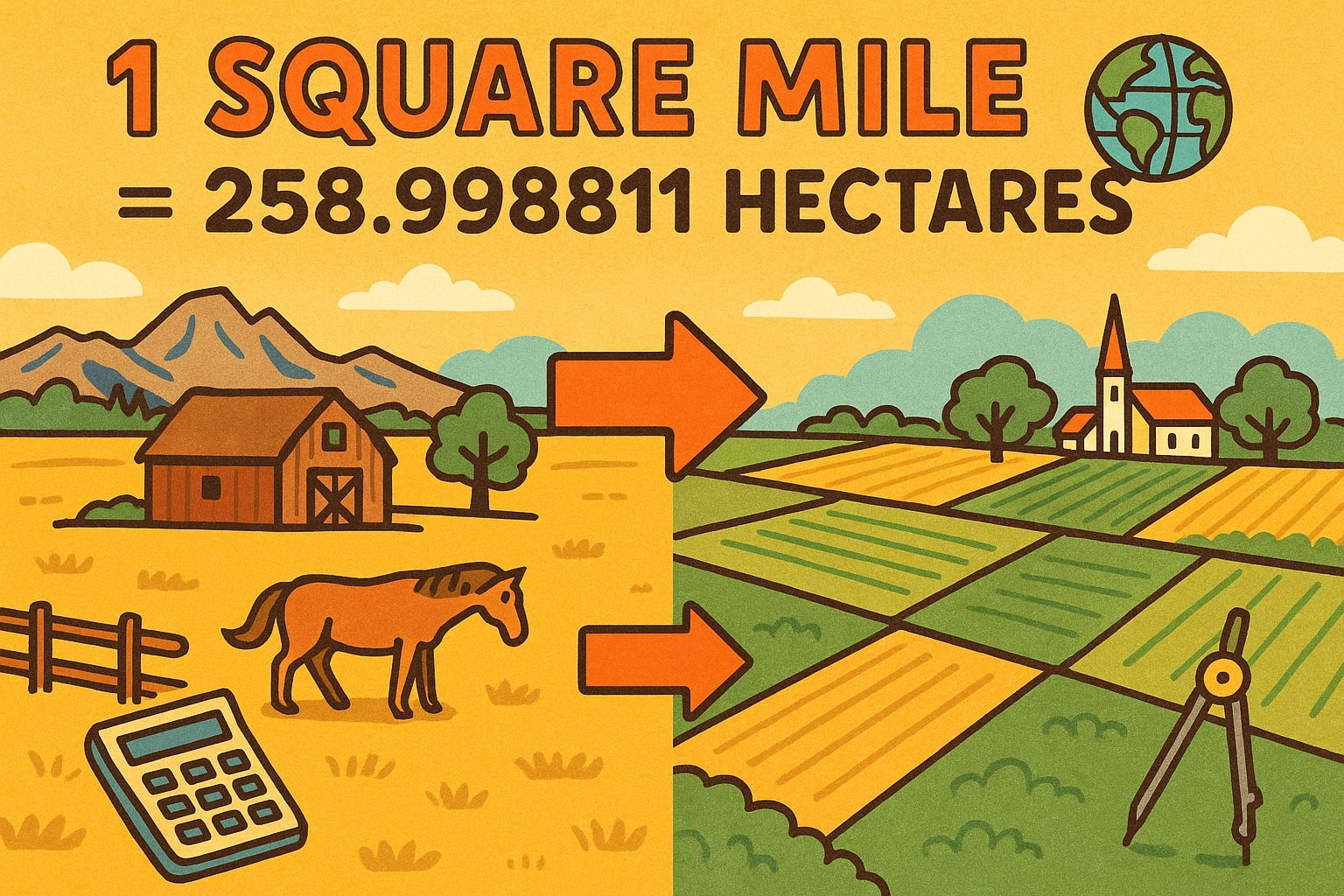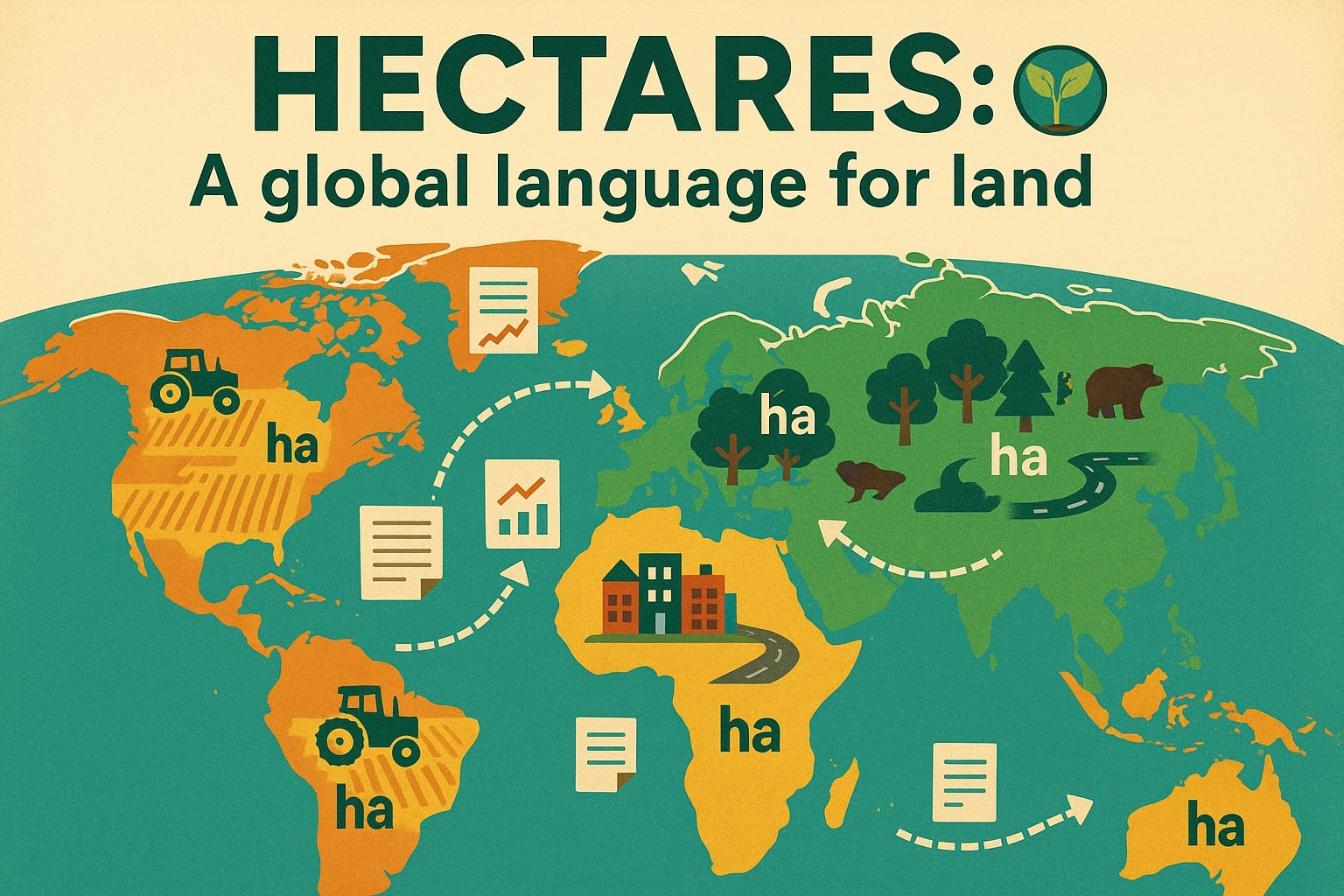square mile to hectare – How to convert mi² to ha
When comparing land across countries, the units used often depend on where you are. In the United States, land is usually measured in square miles, especially for large areas like counties, parks, or ranches. But in most of the rest of the world, particularly in Europe, Asia, and South America, the hectare (ha) is the standard for expressing land area. Whether you're planning international agricultural projects, reading global climate reports, or managing land assets, converting mi² to ha is key.

Here’s the exact conversion:
1 square mile = 258.998811 hectares
That means you multiply square miles by this factor to get hectares.
Formula:
hectare = square mile × 258.998811
Example:
You’re reviewing a land survey that lists an area as 3.5 square miles. To convert that into hectares:
hectare = 3.5 × 258.998811 = 906.4958385
So, 3.5 mi² equals approximately 906.5 hectares — a useful number if you're working in international agriculture or government zoning records.
To run this instantly, use our Area Converter or explore even more with Conversion tools.
Did you know?
-
A hectare equals 10,000 square meters, and is commonly used in farming, forestry, and environmental studies.
-
The U.S. Census Bureau continues to report land in square miles, but international reports from the UN or World Bank often require conversion to hectares.
-
The average size of a French vineyard is around 10 hectares, while a large U.S. ranch could be several square miles in size.
-
Protected forests and wetlands in Brazil are tracked in hectares for precision across multiple states and ecosystems.
-
A football (soccer) field covers roughly 0.7 hectares, so a single square mile could fit more than 370 full-size pitches.
How hectares bring global land data together
The hectare is one of the few non-SI units accepted globally because it fills a unique need: it’s large enough to express meaningful land area, but not so large that it becomes abstract. That makes it ideal for agriculture, conservation, and regional development.
In contrast, square miles work best within U.S. and UK systems, especially when describing counties, wilderness areas, or political borders. But when land data is exchanged across countries or industries — like in climate agreements, trade deals, or environmental impact reports — hectares are the preferred language.
For example, the European Union’s Common Agricultural Policy allocates subsidies per hectare. If a U.S. farm applying for export certification submits a land area in square miles, it must be converted to hectares for processing and compliance.

Bridging measurement systems with one calculation
When your project spans borders or involves global reporting, the right unit makes communication clear. Here’s the essential step:
hectare = square mile × 258.998811
From farmland to forestry, regional planning to resource management, this conversion helps bridge the imperial and metric systems in a single calculation.
Need fast and accurate results? Use our Area Converter, or find more unit matchups with Conversion tools.

